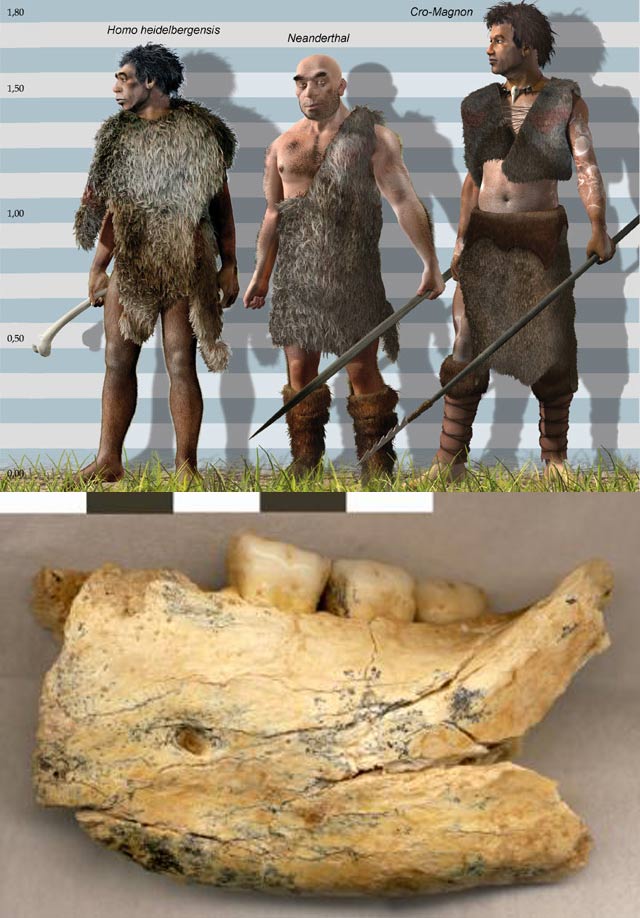

| Visitors Now: | |
| Total Visits: | |
| Total Stories: |

| Story Views | |
| Now: | |
| Last Hour: | |
| Last 24 Hours: | |
| Total: | |
Bones From Our Oldest Ancestor Found in Serbia
The fossil, labelled BH-1, was found to be at least 397,000 years old and possibly older than 525,000 years old, a time when distinctly Neanderthal traits began to appear in Europe.

Top: artist’s reconstruction of human ancestors (SINC / José Antonio Peñas). Bottom: a human lower jaw found in a cave near Balanica, Serbia (Mirjana Roksandic)
The evolution of these traits was strongly influenced by periodic isolation of groups of individuals, caused by episodic formation of glaciers.
“On the basis of preserved morphology, BH-1 differs significantly from Middle Pleistocene European hominins generally grouped underHomo heidelbergensis. It exhibits primitive features such as a prominent planum alveolare, thick mandibular corpus, wide exomolar sulcus, flat rather than concave sublingual fossa, and poorly defined relief of the submandibular fossa,” authors wrote.
“There is a complete lack of derived Neanderthal features… Given the size of the mandibular body, the dentition is relatively small, and fits well with Middle Pleistocene European specimens.”
Humans in south eastern Europe were never geographically isolated from Asia and Africa by glaciers, and according to the authors, this resulted in different evolutionary forces acting on early human populations in this region.
“The study confirms the importance of southeast Europe as a ‘gate to the continent’ and one of the three main areas where humans, plants and animals sought refuge during glaciations in prehistoric times,” said senior author Dr Mirjana Roksandic of the University of Winnipeg, Canada.
“We have very few fossils of hominins in general from this time, a period that was critical for shaping the appearance and evolution of uniquely human morphology and behaviours,” she said.


